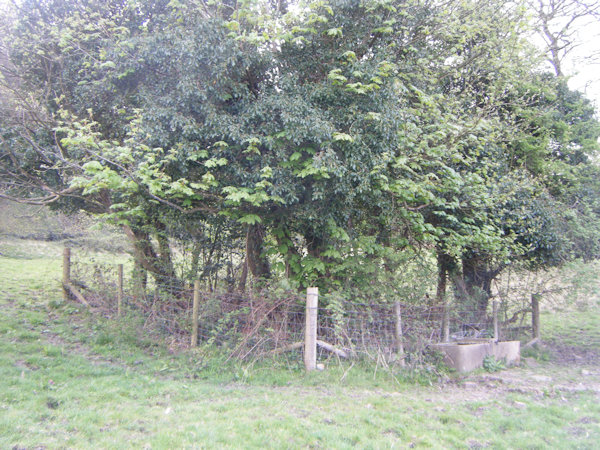 |
Dedication: Saint Mary the Virgin Location: Hardwick Hall Coordinates: 53.16724N, -1.31198W Grid reference: SK460635 Heritage designation: none |
HOME - ENGLAND - DERBYSHIRE
 |
Dedication: Saint Mary the Virgin Location: Hardwick Hall Coordinates: 53.16724N, -1.31198W Grid reference: SK460635 Heritage designation: none |
Nothing is known of the early history of St Mary's Well. Given its location in the grounds of Hardwick Hall, it is possible that the well is a folly, and that it gained its name not through a religious association, but instead as a small landmark in the park that could be shown to guests. Follies like this exist in the grounds of several country houses across the country, including St Catherine's Well at Sugnall Park, Staffordshire, and St Hubert's Well at Foliejon Park, Berkshire. Of course, the fact that a well is located in the grounds of a large house does not necessarily mean that it is a folly (see St Peter's Well, Rushton Hall), and the exact location of St Mary's Well within the grounds of Hardwick Hall, coupled with the fact that the well is not housed in any kind of elaborate structure, suggests that it was used for practical purposes and was not, in fact, a folly at all.
St Mary's Well appears to have been the main water supply for the Hall, it being the only water source in the vicinity of the house. Indeed, an interesting system for transporting the water from St Mary's Well to the top of the slope was in existence from at least the 1590s. The Old Hall was constructed between the years of 1587 and 1590, and replaced an older medieval manor house that had been located on its site. This water transportation system appears to have been constructed in 1591, and seems to have consisted of a lead pipe that led from the well to the top of the slope, where it fed a large lead cistern. This cistern was housed in a very elaborate cistern-house that is now a Grade II listed building. A wheel, which may have been operated by donkeys (similar to the one at Carisbrooke Castle on the Isle of Wight) was used to pump the water to the cistern-house, and was perhaps housed in a building at the foot of the slope, the remains of which can be seen today. The construction of the elaborate cistern-house (referred to as "ye well") is documented in Bess of Hardwick's book of accounts:
|
July, 1591: 150 fot of stone for ye arches of ye well 23rd October, 1591: To Hulley, Battley, and Cuttberd for hewing xxxiiii foots and d. of parpen ashler for the well at id ob the foot measured both sids. To Hulley for hewing of a peec of the head that most stand over the parpen ashler cut iii feet longe xiid |
There is also mention of a timber "Well House" covered with slate, which cannot possibly be the cistern-house, and very probably refers to St Mary's Well. On the 10th of February, 1592/3, a carpenter named "Mylington" is said to have built the "Well House", and on the 27th of August, 1593, "Slates for the Well House" are mentioned. The wheels that clearly powered the entire system were mentioned on the 11th of July, 1597, when Mylington was paid "for clyving lath for the Well House, with mending a pair of whils", and "100 eightpenny nail to mend ye bottom of ye well wheill" was required.
St Mary's Well drifted under the radar completely for the next few centuries, and the pumping system fell into disuse. Today, no trace of the wheel remains, and the cistern-house is ruinous. In 1985, the well was described in an archaeological survey of Hardwick Hall conducted by the National Trust as being "covered over and fenced round, although very overgrown. It apparently still has water in it and feeds a cattle trough which is just beyond the fence". When I visited the well in the April of 2025, nothing had changed, and the spring appeared to rise in a large square stone basin, covered with rotten wooden boards and whitewashed inside, before issuing through a medium-sized pipe into a concrete trough on the western side of the enclosure.
|
Access: The well is located on property owned by the National Trust, and is open to the public. |
Copyright 2025 britishholywells.co.uk